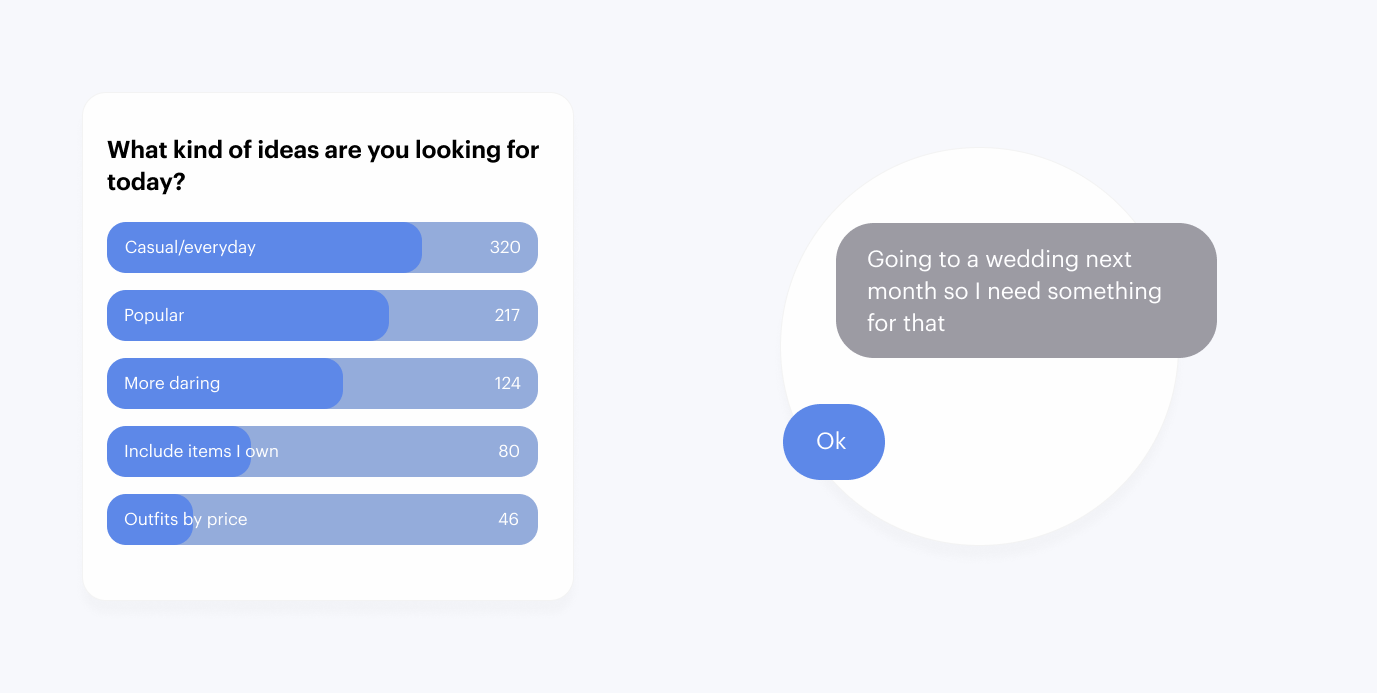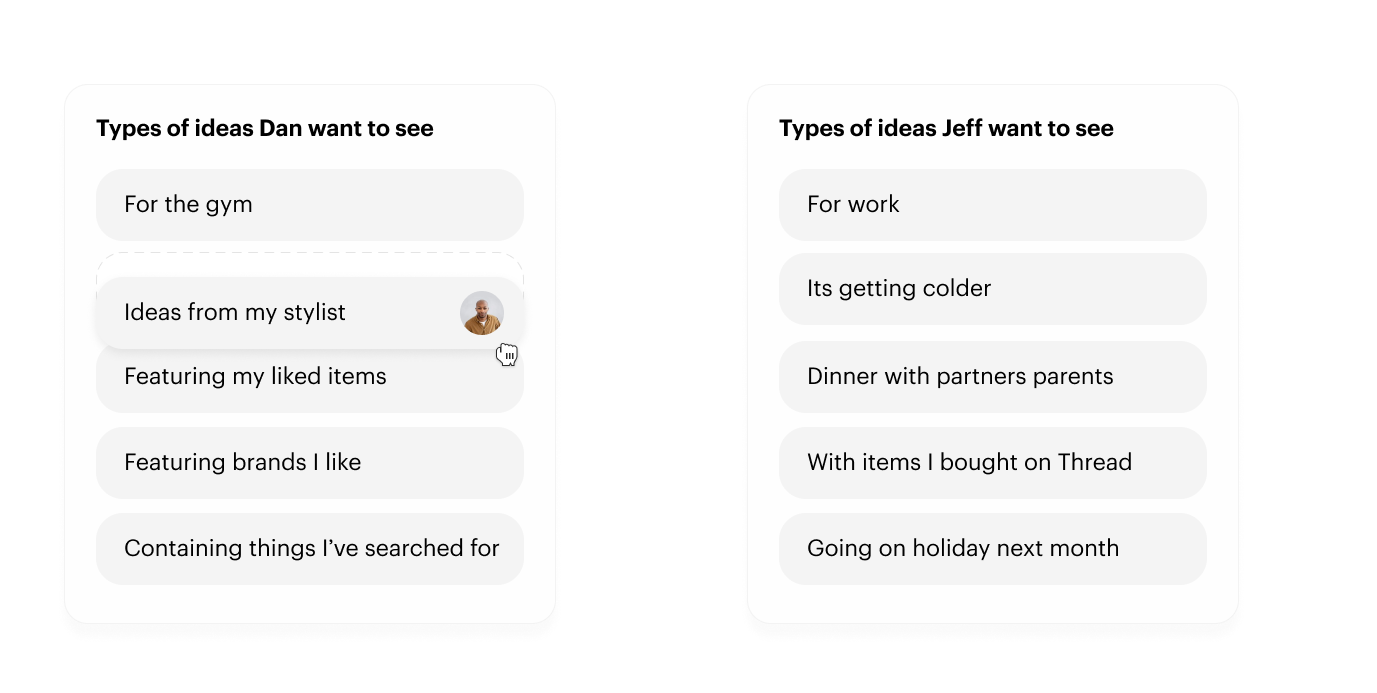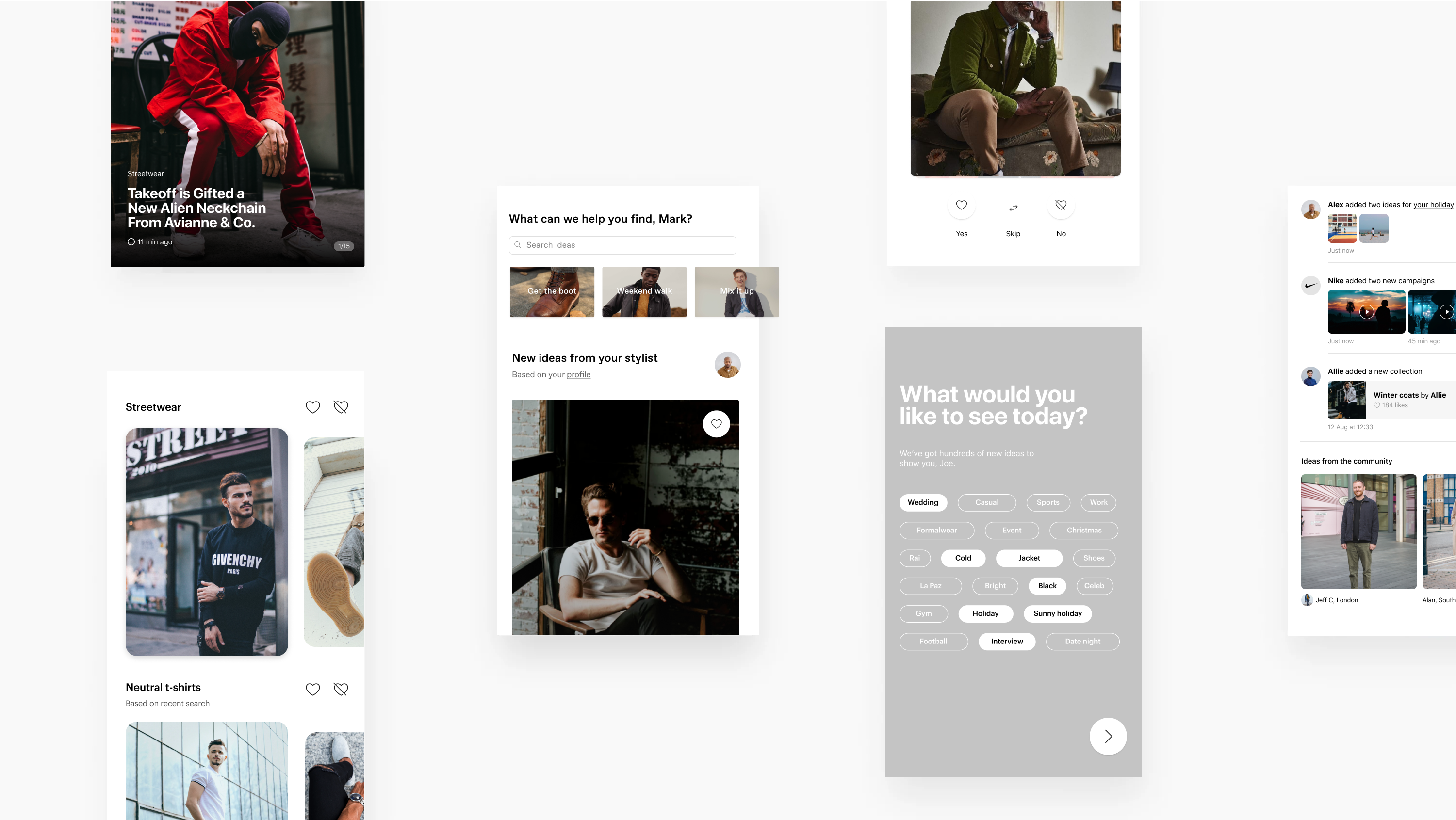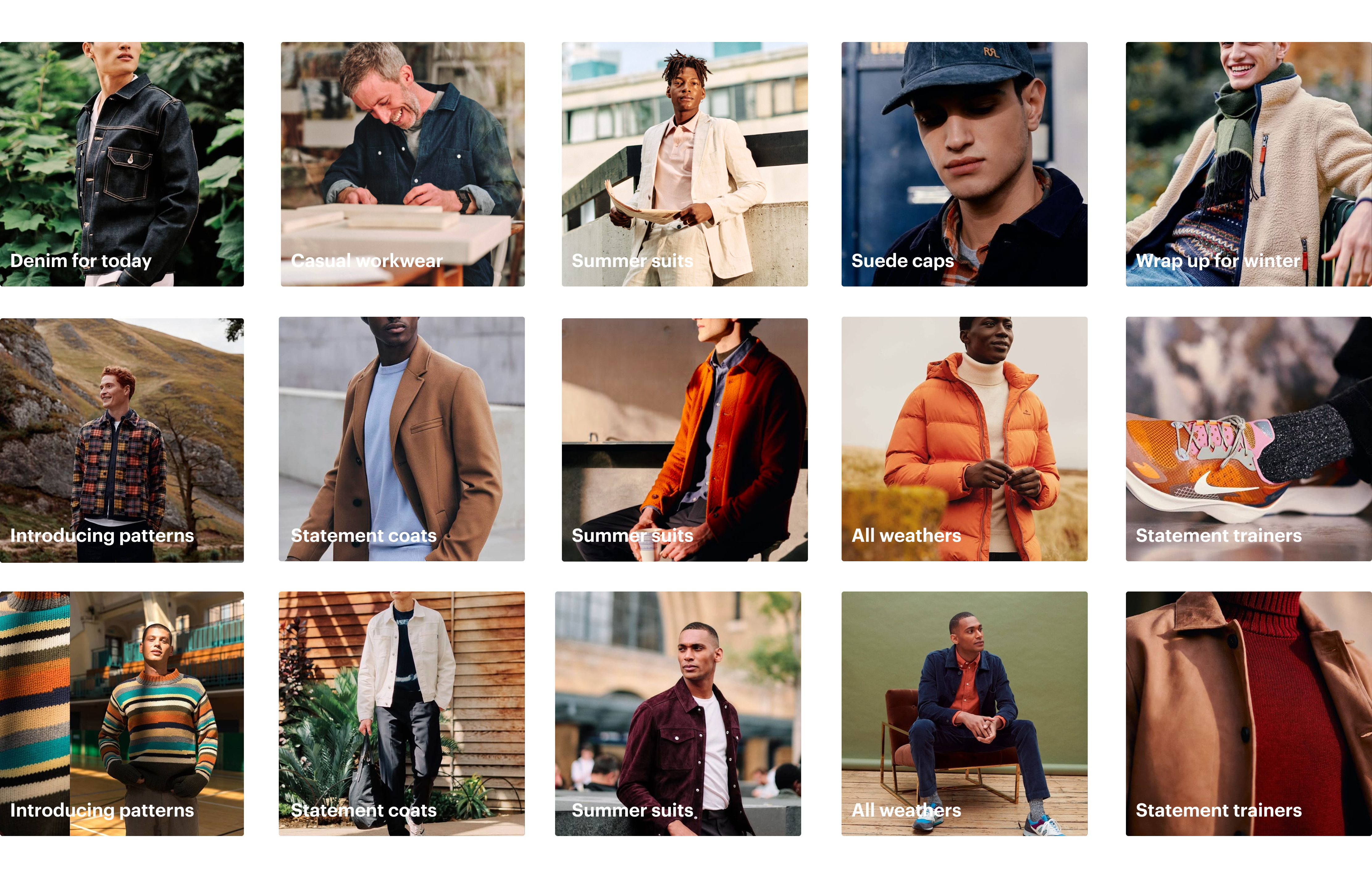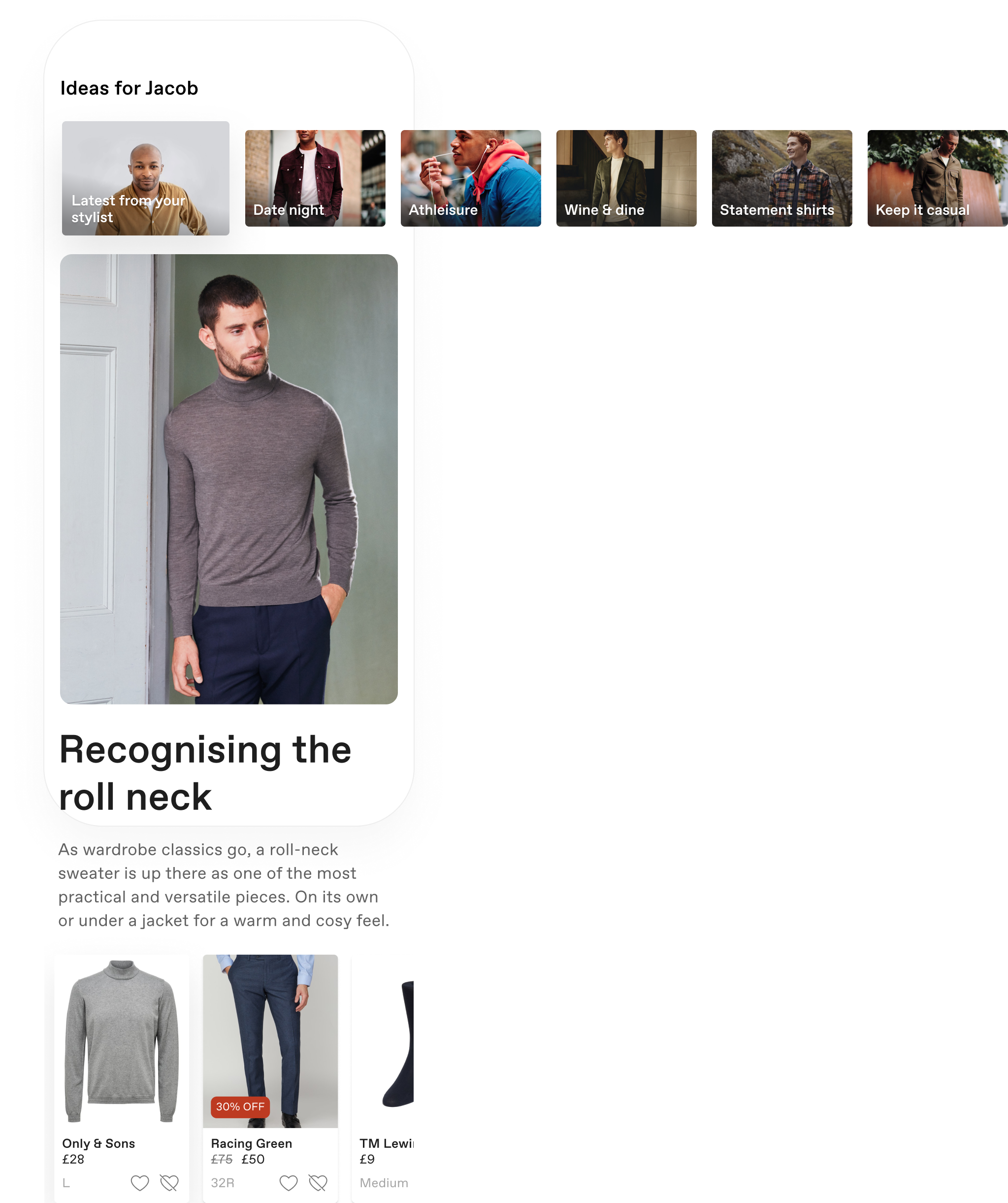Introduction
Thread is Spotify for clothes
Thread learns from a user to suggest outfits and items that match their budget, style and size.
One of Thread’s core features is Ideas: a feed of shoppable, personalised outfits. They're updated weekly, with 10 new suggestions for every user, sent to them by their Thread stylist.
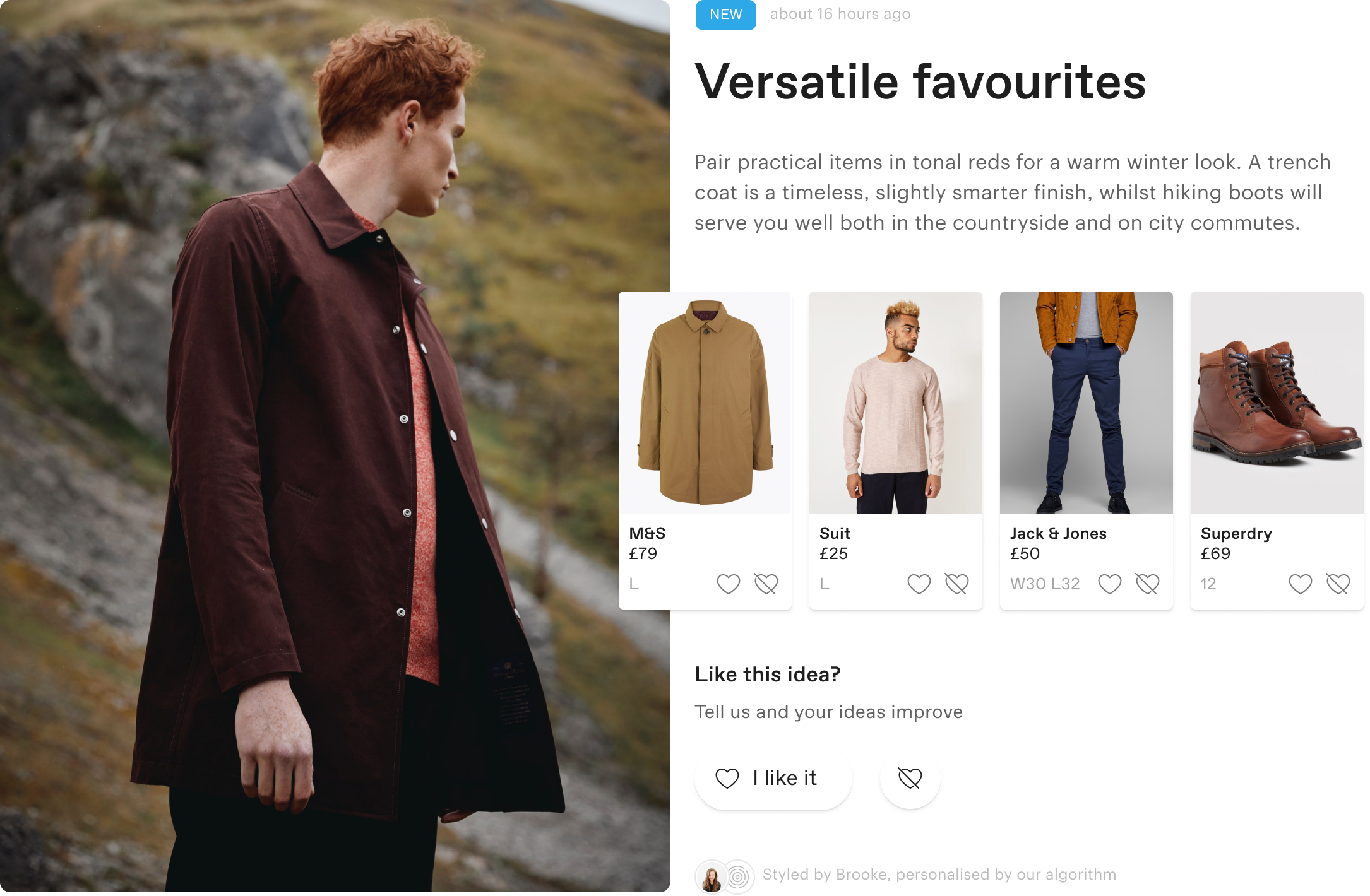
The problem
A core feature had become outdated
The weekly email users got had created a rigid habit loop that meant users would tend to not visit Thread without the reminder of the email. If they did open that email, and visit their Ideas feed, they'd have no choice but to scroll through whatever the algorithm and their stylist had created for them.
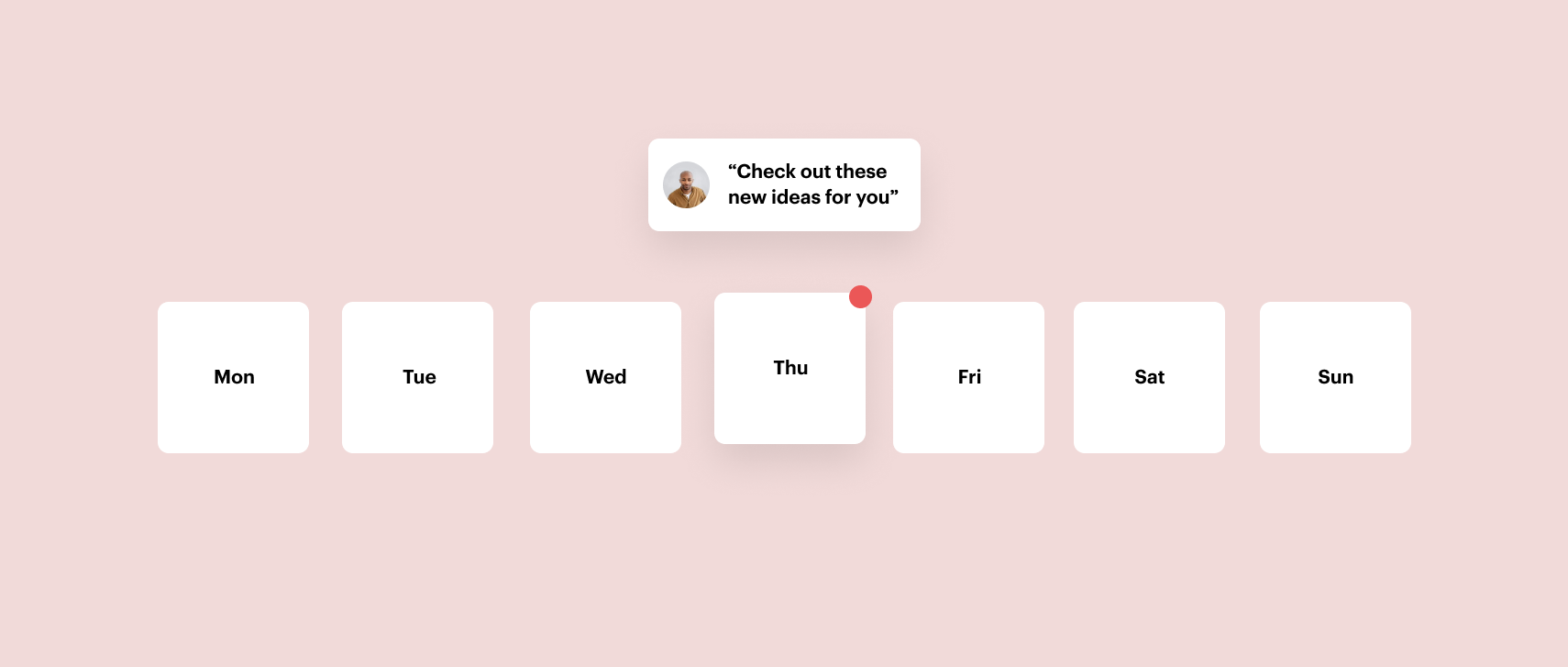
User engagement and purchases from Ideas had declined. Since the ideas feed was originally created, feed experiences had evolved. People had grown used to getting specific content on demand. Things had moved on, and a feed that just sent things to a user didn’t cut it anymore.
Thread formed a team of myself and two engineers to solve this.
